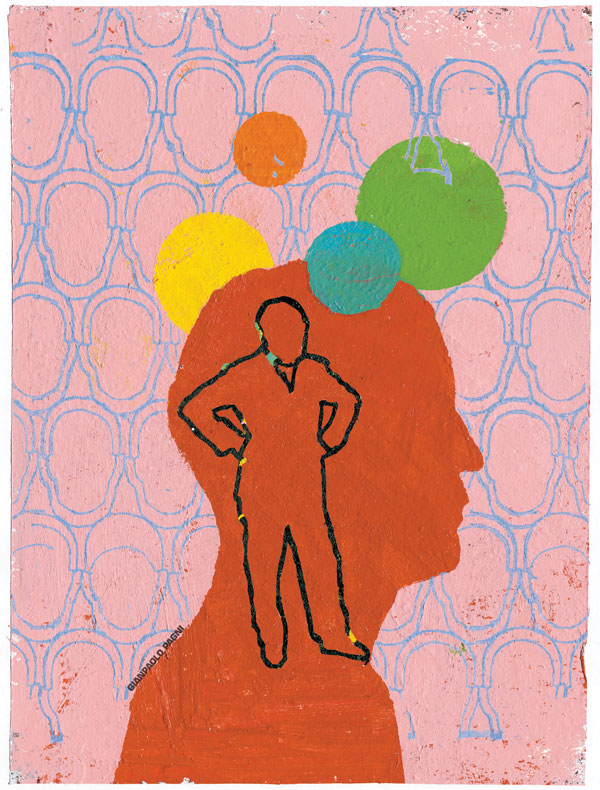Understanding Adult ADHD

Brook Ochoa, 42, doesn’t fidget or squirm or bounce off walls like an 8-year-old child with ADHD. That’s primarily because she’s an adult, and adults tend to lack the hyperactivity part. The single mother of two has plenty of other symptoms, however. “I read seven books at a time, have never finished a project in my life, and when I get bored with a job I just walk away. I never knew until recently that that wasn’t normal. If it’s boring, I’m done.”
“Boring” is the kiss of death to adults with ADHD (attention deficit hyperactivity disorder or just ADD if they lack the hyperactivity component). And her inability to stay interested in any one subject for long may explain why Brook quit several jobs as manager and assistant manager of stores like Target and Wal-Mart. Brook is certainly competent enough to handle a heavy workload. She did well in school and earned a master’s degree in human resources; she can focus and finish assignments when they interest her. But around the house, she struggles with such simple tasks as washing dishes after meals. “Every dish in the house has to be dirty before I notice,” says Brook with a sigh. (See also “Symptoms of ADHD.”)
But at least she knows where her demons lie. For adults who were not diagnosed as children—and anyone who was already an adult when ADHD became widely recognized in children in the 1990s is unlikely to have been—having a label affixed to their struggles allows them to finally seek help. Perhaps even more important, it lets them make sense of a lifetime of bewildering experiences, of feeling hopeless or helpless in the face of their mental dysfunction, and, in many cases, wondering why they never achieved what they felt they could have.
“The more she described ADD the more the light bulb lit up for me,” recalls Robin Bellantone, 61, a mental health counselor in Portsmouth, New Hampshire. She had no idea adult ADD existed when she had the life-altering conversation during her graduate-school internship at the Massachusetts College of Art and Design in 1999. It was there that she heard a fellow staffer who specialized in working with artists with ADHD talking about the disorder: “It explained so much about my own history”—her inability to focus, her difficulty paying attention, her constant search for new stimulation.
Stories of adults who finally learn they have ADHD are as unique as the people themselves, but they have at least one thing in common: a sense that what was once shrouded in mystery is now lit with understanding, that a weight has been lifted and a puzzle solved. The National Institute of Mental Health estimates that 4.1 percent of adults have ADHD in any given 12-month period (compared to 9 percent of children). In the young, three times as many boys as girls have ADHD, but by adulthood the prevalence is the same in both sexes.
For adults, having the ADHD label affixed to their struggles allows them to finally seek help.
If it sometimes seems that everyone has some form of ADHD in today’s disjointed world of smartphones, tablets, and the like, the formal diagnosis is indeed on the verge of becoming more common. The newest edition of the American Psychiatric Association’s Diagnostic and Statistical Manual of Mental Disorders, scheduled for release in May 2013, is expected to loosen the diagnostic criteria for the disorder substantially, lowering the number of symptoms required. (See chart, “Symptoms of ADHD,” next page.) But, even so, there are misconceptions about what it takes to qualify. For example, inability to focus and being easily distracted—with no other symptoms—wouldn’t be enough. You do not have ADHD if you simply like to flit from task to task at work. You do not have ADHD if you get bored doing housework. You do not have it if your mind wanders when reading dense, boring prose on a topic you have no interest in; if you get fidgety during boring sermons or hours-long presentations from a financial planner; or if you start reading another book or magazine before you finish the previous one you’ve started.
Moreover, the symptoms must appear in at least two settings: If you only show these behaviors at work, then you do not have ADHD. You probably just don’t like your job.
Still, the condition is underdiagnosed. Today, for every adult whose ADHD has been identified, there are at least three adults whose ADHD has not, according to Dr. Mary Solanto of Mount Sinai Medical Center in New York. Underdiagnosis reflects that adults can compensate for ADHD by choosing jobs that fit their brains—for instance jobs that present constant new challenges rather than jobs where one does the same task over and over.
That probably explains why Ruth didn’t receive her diagnosis until age 74. As a young woman she had few friends, felt isolated, and often blurted out what she felt without much thought for the consequences. Then, after marrying and raising a family, Ruth—who did not want her full name used—went to nursing school at age 46. She adored her new career. “I was busy all of the time. It’s never boring,” she says.